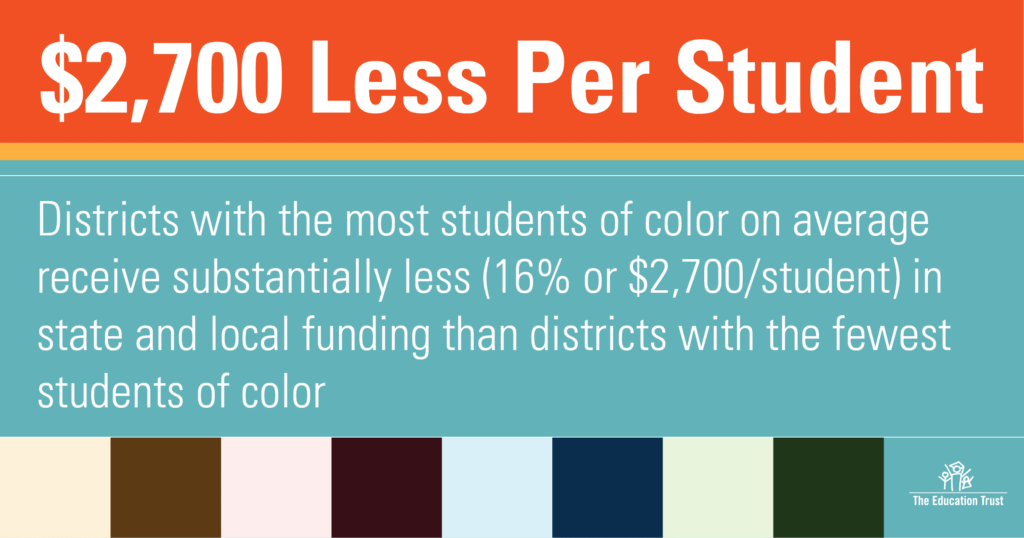Updated data from The Education Trust identifies school funding gaps within states and between districts and schools
WASHINGTON – Across the country, districts with the most Black, Latino, and Native students receive substantially less state and local revenue — as much as $2,700 per student — less than districts with the fewest students of color. In a district with 5,000 students, this means $13.5 million in missing resources.
In an updated analysis, “Equal Is Not Good Enough” and an interactive data tool, The Education Trust identifies where states fail to provide fair funding to the districts educating the most students of color, students from low-income backgrounds, and English learners. For the first time, the data tool includes newly available school-by-school spending data for schools in each district, with contextual information to gauge whether schools that serve more students of color, students from low-income backgrounds, or English learners are spending more than other schools in the district.
The report’s findings point to the urgent need for fair resource allocation, as the 2022 National Assessment of Educational Progress (NAEP) found that Black and Latino students experienced larger-than-average dips on fourth grade tests, widening already significant test score gaps compared to White and Asian American students. Gaps on the NAEP tests for Black and Latino students in eighth grade, as well as between low- versus middle- and high-income students in both fourth and eighth grades, remained significant.
“Money matters, and how much a school has affects student outcomes. Yet, school districts and schools that serve large populations of students from low-income backgrounds, students of color, and English learners continue to receive less funding,” said Ivy Morgan, director, P-12 data and analytics at Ed Trust. “This data identifies inequities in state and local funding between districts, and, using newly available data, helps us make meaningful comparisons about how funding and other important school resources are being allocated across schools in a district.”
Among Ed Trust’s findings:
- Across the country, districts with the most students of color on average receive substantially less (16%) state and local revenue than districts with the fewest students of color, equating to approximately $13.5 million for a 5,000-student district
- The districts with the most English learners receive 14% less state and local revenue, compared with districts with the fewest English learners. That leaves districts with higher needs for resources — including bilingual educators and instructional materials – with $2,200 less per student than districts with lower needs
- High-poverty districts receive on average 5% less (about $800 per student) state and local revenue than low-poverty districts. There are 37 states where districts that serve the highest concentrations of students from low-income backgrounds are not receiving substantially more funding than their more affluent counterparts







